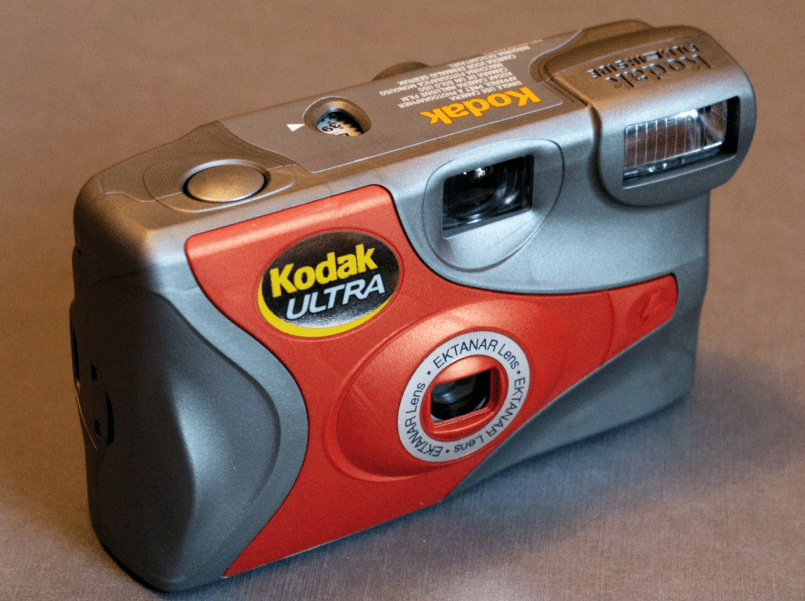Today, capturing photos is far easier. You get your smartphone from your pocket, go to the camera app, take a picture, and you’re good to post it on Instagram. Yet, things weren’t as straightforward as this before. There was a point in history when pictures were more valued than the camera itself – the era of the single-use or disposable camera. After taking snapping photos, people are done with the camera, and they’re free to dispose of it (something you certainly don’t want to do with your smartphone). So, let’s just look back at the indisposable memories and the history of the disposable camera. Meanwhile, we recommend you click the link if you want to buy the best Photo Booth online.
What is a Disposable Camera?
A disposable camera, also called the single-use camera, is a camera intended to be used once, containing a single roll of film. While it may possess the same integral parts as that of other cameras that use films, such as lenses (mostly fixed-focused) and shutter, its housing is disposed of after the film has been processed.
Since it’s only for single-use, it also comes with fewer features but has a more simplified interface than its reusable counterparts. Some disposable cameras have flash units but cannot detect when it’s necessary to use, unlike smartphones that may automatically use them in low-light conditions. The Flash feature of single-use cameras must be turned on manually and will flash as it is open regardless of the light available around.
A single roll of film is loaded into a disposable camera. The user needs to advance it every time a new picture will be taken. A notch or gear at the camera’s top portion will do the job. Once set, the user may now look through the camera’s viewfinder, open the shutter through a button click, and now allow the light to enter the lens and register the image on the film. The film then should be dropped off at a facility that will develop, process, and print the photos.
The History of the Disposable Camera
While disposable cameras are associated with ones that were created in the 1980s by the Japanese company Fujifilm, the first disposable camera can be found a century before the device rose in popularity.
In 1886, Alexander Pope Whittell invented the “Ready Fotographer,” a single-frame camera with a cardboard housing. It featured a dry plate where the image will form after allowing light through the aperture. As the users needed to cut the plate for development, the camera can only be used for a single shot and must be disposed of afterward. It sold for only 25 cents in the United States and received considerable success during its run.
In 1949, Photo-Pac released a cardboard camera costing $1.29, enabling users to take eight shots from the 35mm film. After taking the photos, buyers then send the cameras to the company for processing in Dallas. Once images are developed, they are mailed back to the buyer in a few days.
At a time when cameras were costly, Photo-Pac served to be an excellent alternative. It also became pretty available as users can buy them in gas stations, drug stores, or department stores whenever they feel like it. Though the Photo-Pac served the same purpose as the disposable cameras we have today, the device never actually created a lasting impression on the consumer market.
It was in 1986 when the innovation of the disposable camera became more acceptable to the public. That year, Fujifilm released Quick Snap Utsurun-Desu for 1,380 yen. It became widely popular and was able to sell over a million units within the first year of its release. Other companies, such as Kodak, Canon, Nikon, and Konica, followed suit with the rising appeal.
The competition proved to be rewarding for the device, as the newer models became better features, such as waterproofing, integrated flash units, panoramic photography, and manual zoom. By 2005, disposable cameras had become a staple among most people, as they were lightweight, convenient, and affordable. Thus, allowing them to take photos whenever they want to.
Soon, the digital age came, and the appeal of disposable cameras dwindled. Most people opt to use smartphone cameras, digital cameras, or high-end ones for high-resolution photos and the convenience of the digital format for easier editing and uploads.
Disposable cameras are not totally out of the picture, though. In fact, these devices are making a comeback. Disposable cameras provide a nostalgic feeling of times when things were pretty simpler than what it is today. It’s also practical to bring them on camping trips, beach vacations, or out-of-country trips, as you don’t have to worry about losing a costly camera. Lastly, the “wait” needed as the film needed to be developed is rewarding once you see the photo. Plus, the element of surprise and the indisposable memories each image brings as you see them is undoubtedly gratifying.
